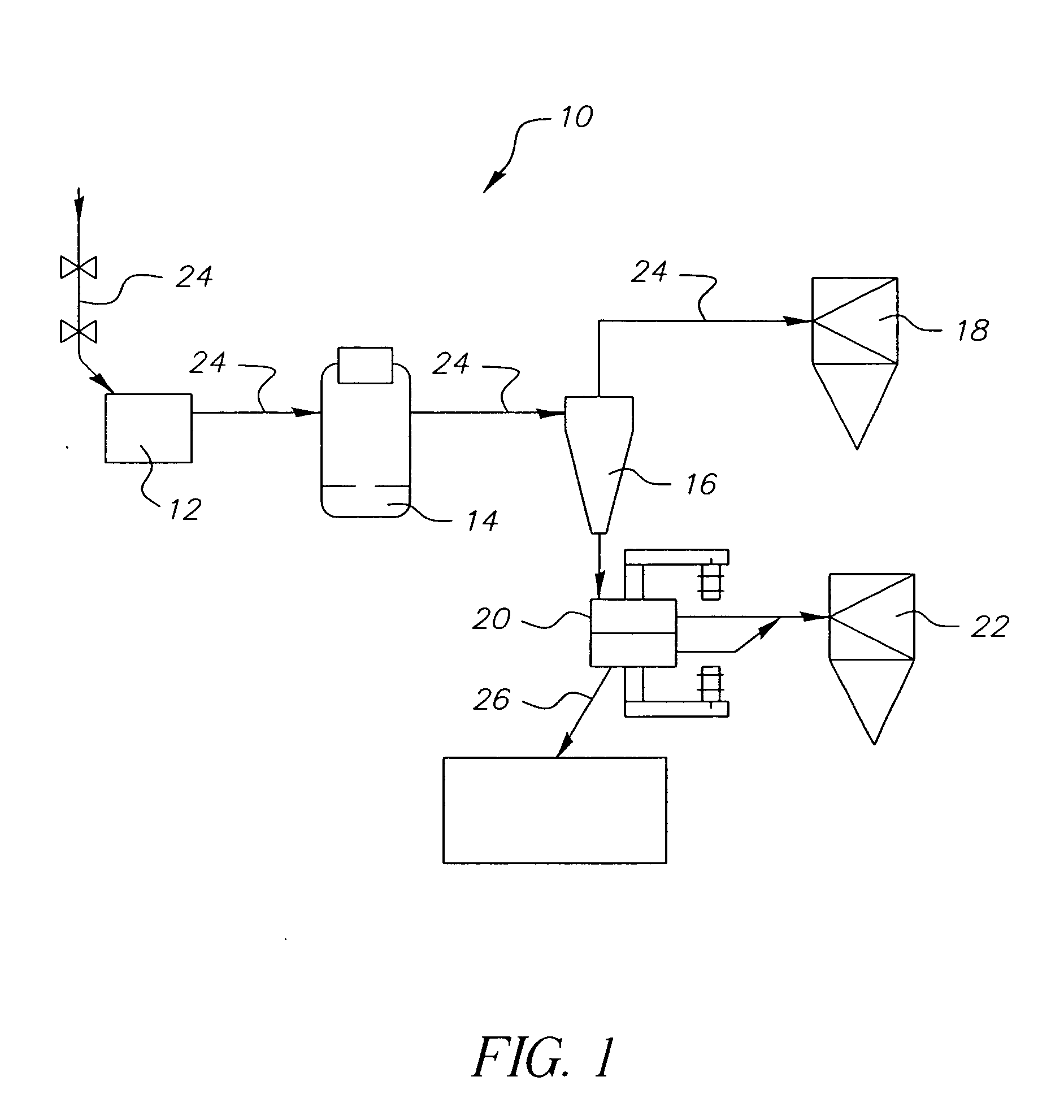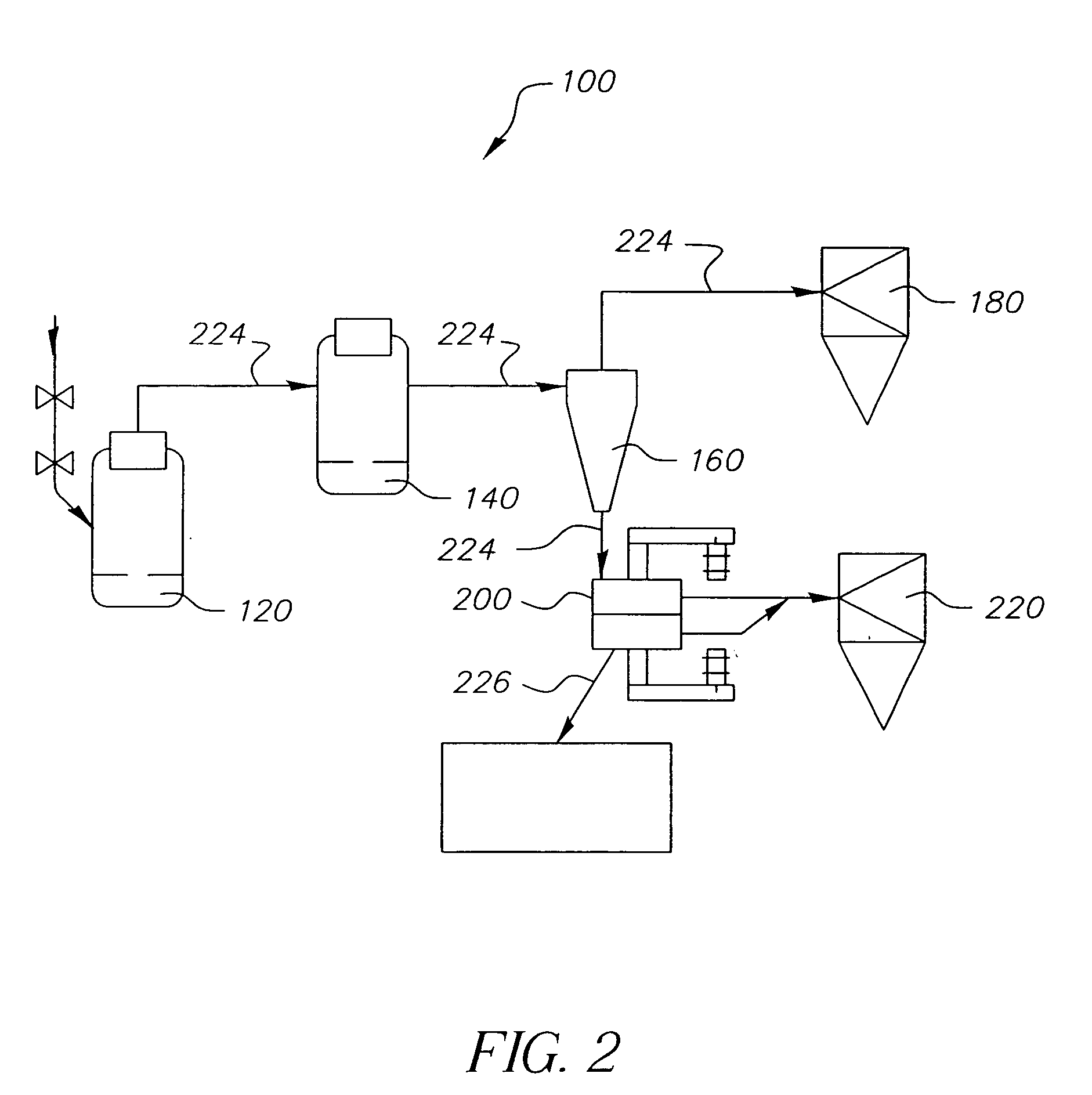Method and apparatus for energy efficient particle-size reduction of particulate material
- Summary
- Abstract
- Description
- Claims
- Application Information
AI Technical Summary
Benefits of technology
Problems solved by technology
Method used
Image
Examples
example 2
[0038] A first black toner extrudate was prepared by melt blending Regal 330 carbon black pigment from Cabot Corporation, Billerica, Mass. USA in a 30 mm twin-screw extruder with Binder C polyester of Kao Corporation of Tokyo, Japan, and with 2 pph Bontron E-84 charge agent such that the final pigment concentration was 3.0 parts of pigment per 100 parts resin by weight. These concentrations were chosen, for specific colorimetric properties not pertinent to the invention. The two toner extrudates were each individually cooled out of the extruder through a chill-belt, and granulated. The resultant toner extrudate granules were of approximately 500 microns in size.
[0039] The first black toner extrudate was pulverized and classified to the desired volume-average particle size of from approximately 7.5μ to approximately 8.0μ. Similarly, a second black toner extrudate was prepared using methods identical to the above-described methods, but having a higher pigment concentration of 4.5 par...
example 3
[0046] A magenta toner extrudate was prepared by melt blending a pigment flush obtained from BASF Aktiengesellschaft of Ludwigshafen, Germany, as Lupreton Red 1255 in a 30 mm twin-screw extruder with Binder C polyester of Kao Corporation of Tokyo, Japan, and with 2 pph Bontron E-84 charge agent such that the final pigment concentration was 6.0 parts of pigment per 100 parts resin by weight. These concentrations were chosen, for specific colorimetric properties not pertinent to the invention. The toner extrudate was cooled out of the extruder through a chill-belt, and granulated. The resultant toner granules were of approximately 500μ in size.
[0047] Two separate batches T1 and T2 of the magenta toner extrudate were pulverized to respective volume-average particle sizes using a conventional single-stage process. More particularly, batch T1 of magenta toner material was pulverized in a single-stage process to a final or desired volume-average particle size of approximately 6.0μ. A sec...
PUM
 Login to View More
Login to View More Abstract
Description
Claims
Application Information
 Login to View More
Login to View More - R&D
- Intellectual Property
- Life Sciences
- Materials
- Tech Scout
- Unparalleled Data Quality
- Higher Quality Content
- 60% Fewer Hallucinations
Browse by: Latest US Patents, China's latest patents, Technical Efficacy Thesaurus, Application Domain, Technology Topic, Popular Technical Reports.
© 2025 PatSnap. All rights reserved.Legal|Privacy policy|Modern Slavery Act Transparency Statement|Sitemap|About US| Contact US: help@patsnap.com



